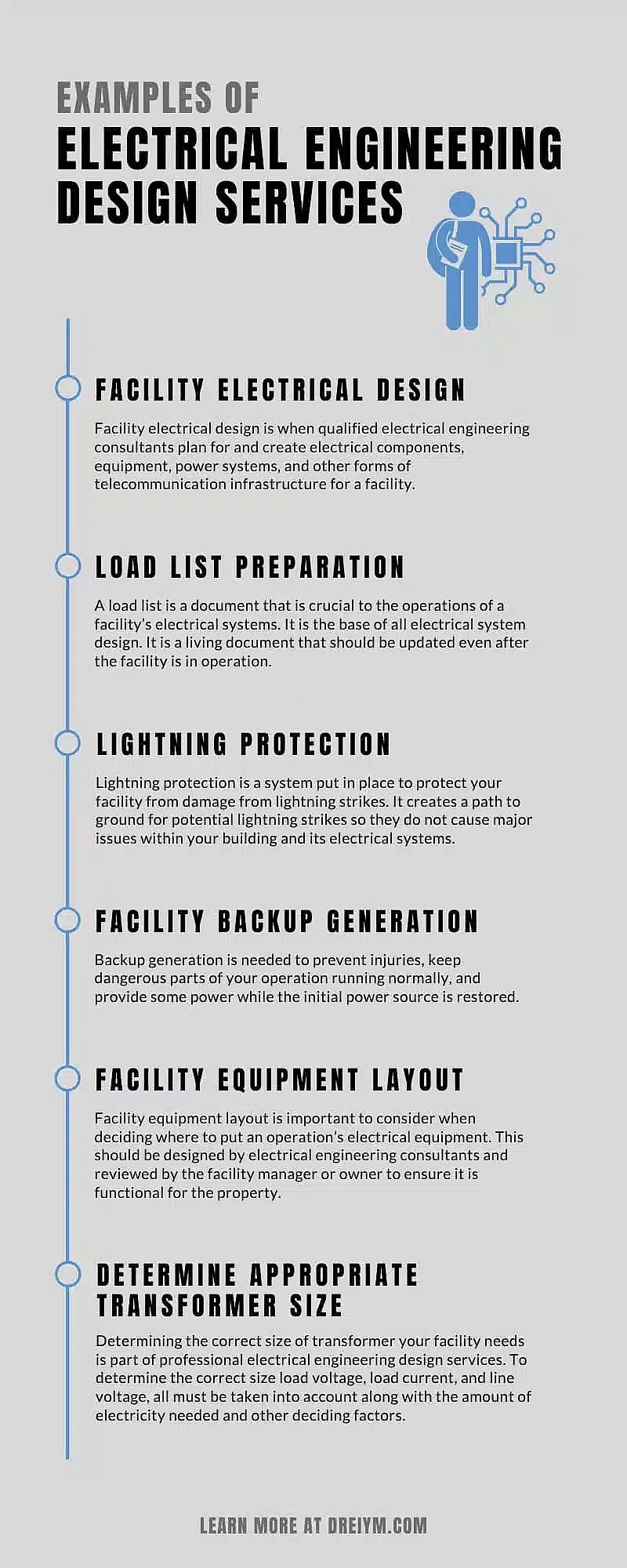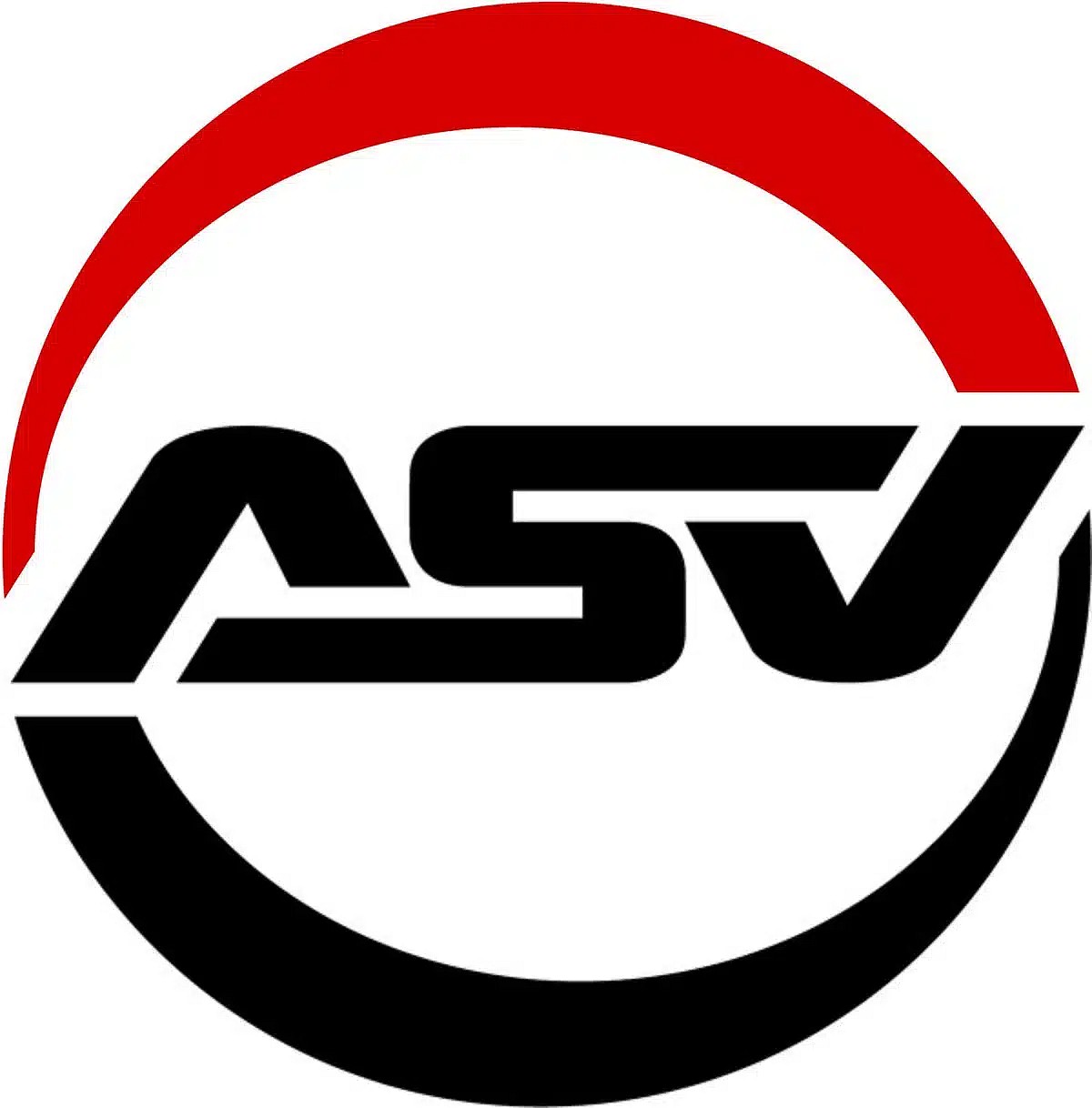Examples of Electrical Engineering Design Services
If your business is looking for electrical design services, it will need to hire qualified electrical engineering design consultants. You may be developing an electrical design system or even optimizing an existing electrical design system; either way, electrical engineering consultants can help you design and improve your systems. The goal of an electrical design system is to meet all regulatory standards and meet the electrical design requirements to provide a cost-effective solution to any needs your operation may have. No two operations are the same, which makes a unique electrical design imperative to productivity. Below are some examples of electrical engineering design services. These are all different parts that intertwine to create a full custom electrical engineering design.
Facility Electrical Design
Facility electrical design is when qualified electrical engineering consultants plan for and create electrical components, equipment, power systems, and other forms of telecommunication infrastructure for a facility. These are typically large-scale designs that require the use of industry-leading design software, tools, and an in-depth understanding of electrical control systems designs. A facility electrical design is ideal for those looking to establish a new electrical design system or for those looking for a complete overhaul of an old system.
Power Distribution System Design
A power distribution system design is the process of ensuring electrical services are the right size and designed to appropriately meet the needs of a certain facility’s electrical load usage. This design includes all motor control centers, panel boards, electrical service entrance points, and all other auxiliary distribution systems. Qualified electrical design engineering consultants will take the electrical specifications and decide on the best equipment options, create panel board schedules, and conduct load-flow analysis for different projects within the electrical system.
Load List Preparation
A load list is a document that is crucial to the operations of a facility’s electrical systems. It is the base of all electrical system design. It is a living document that should be updated even after the facility is in operation. A load list preparation is completed by an electrical engineering consultant. The consultant prepares the living document and makes sure it is set up to be kept up-to-date and accurate in case any changes occur or fields need to be updated. This document should be intact as long as the facility is.
Surge Protection
Surges can cause electrical system breaks and pauses to power or even lead to electrical fires, which are one of the number one causes of industrial fires. Avoiding power surges is necessary to running a safe and smooth operation. Surge protection will cut down on your chances of a power surge, thus making your facility safer and your electrical systems more reliable.
Lightning Protection
Lightning protection is a system put in place to protect your facility from damage from lighting strikes. It creates a path to ground for potential lightning strikes so they do not cause major issues within your building and its electrical systems. Preparing for the unlikely event of a lightning strike can save you a great deal of money in potential damages and overpowering your electrical systems.
Soil Resistance Surveys
Soil resistance surveys will help you to understand the resistivity of your soil to electricity. This is a nondestructive procedure that is able to determine the properties without disrupting your facility. This is an essential factor in the electrical design of your facility because it helps design the grounding system for lighting conductors and earthing electrodes. This helps prevent electrical fires and outages that can be devastating to your facility. The soil itself will be used to conduct the fault current to when there are system faults. Electricity needs somewhere to go, and grounding it is the best way to get rid of it without overwhelming, damaging, or causing irreversible damage to your facility.
Facility Backup Generation
Facility backup generation is what your facility can lean on during power outages to keep running essential services and areas. A backup generator is used to power the essential electrical parts of your facility in case of main power failure. Backup generation is needed to prevent injuries, keep dangerous parts of your operation running normally, and provide some power while the initial power source is restored.
Lighting Plans and Load Estimation
Load estimation is an in-depth analysis of the load characteristics and the demand for electricity. It is a relationship analysis between actual demand and connected loads. This is important to estimate the actual usage of electricity and what the systems can stand. It prevents underplaying for actual electrical loads and plans for surges and other random or unlikely increases in usage.
Facility Equipment Layout
Facility equipment layout is important to consider when deciding where to put an operation’s electrical equipment. Equipment should be spread out so as not to overwhelm a certain breaker while still maintaining a functioning workflow for the facility. This should be designed by electrical engineering consultants and reviewed by the facility manager or owner to ensure it is functional for the property.
Electrical Egress Requirements
Electrical egress requirements are designed to ensure your facility is safe to escape danger should it arise. The egress path at the facility needs to be secure and clear so that workers or anybody inside can easily find their way to safety in a swift manner. An effective egress can be the difference between life and death during electrical work and should be taken very seriously and only conducted by professionals.
Determine Appropriate Transformer Size
Determining the correct size of transformer your facility needs is part of professional electrical engineering design services. To determine the correct size load voltage, load current, and line voltage, all must be taken into account along with the amount of electricity needed and other deciding factors. Too small a transformer can create issues within the facility and with the operations.
These are all examples of what is included in electrical engineering design services. When you’re looking for engineering consulting services that you can trust, Dreiym Engineering delivers. Our team of experienced engineers can complete the right electrical design service for your facility. Contact our team for more information and a quote on our exemplary services today.













































